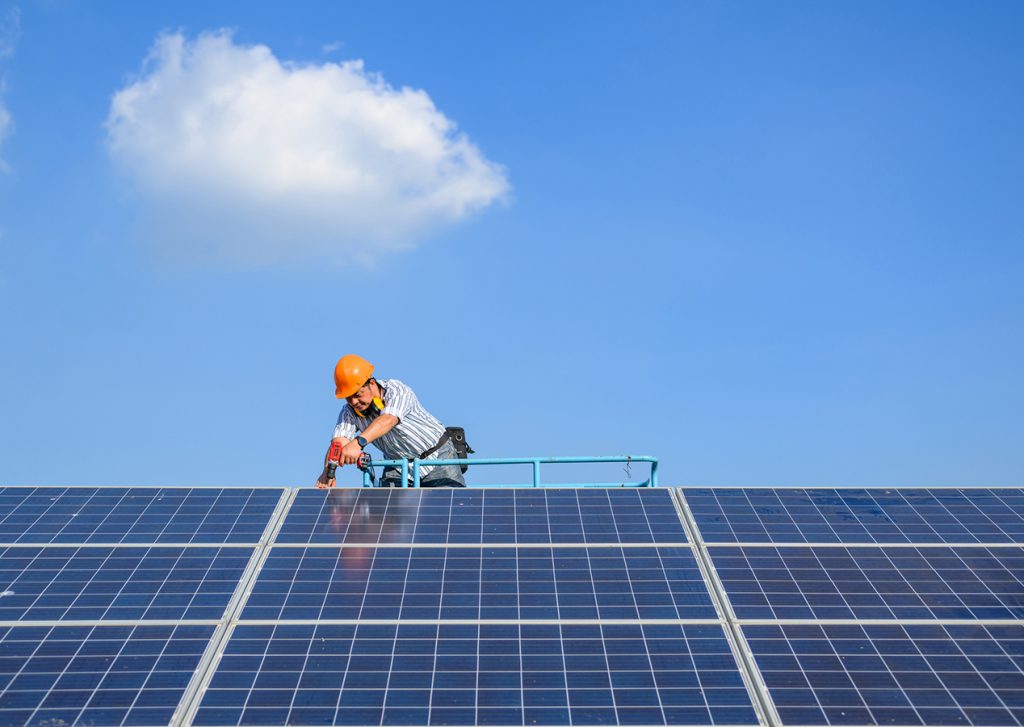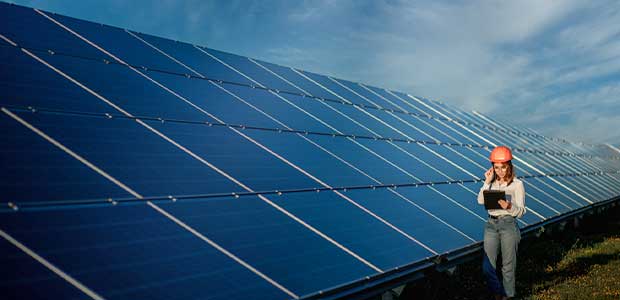Why Choose Simply Solar Illinois for Sustainable Energy Solutions?
Why Choose Simply Solar Illinois for Sustainable Energy Solutions?
Blog Article
Solar Power 101: A Newbie's Overview to Sustainable Energy Solutions
As the globe progressively shifts towards sustainable energy remedies, understanding the fundamentals of solar power becomes important for both individuals and organizations. By checking out the advantages of solar technology, together with the financial motivations and installation procedures, one can gain a clearer point of view on how to efficiently integrate this sustainable resource into their power approach.
Recognizing Solar Energy
At its core, comprehending solar energy entails comprehending the fundamental concepts of how sunshine can be converted into functional electrical energy. Solar power is acquired from the sun's radiation, which can be harnessed with various technologies.

Understanding solar power likewise entails recognizing its ecological advantages. By utilizing sunlight, we can alleviate greenhouse gas discharges and decrease air pollution, adding to a more lasting future. The advancements in modern technology and efficiency of solar systems continue to enhance their viability, making solar energy an increasingly appealing alternative for worldwide power demands.
Types of Solar Power Equipments
Different kinds of solar power systems are commonly employed to harness solar power for electrical power generation. The key classifications consist of solar (PV) systems, concentrating solar energy (CSP) systems, and solar thermal systems.
Photovoltaic systems use photovoltaic panels composed of silicon cells that transform sunshine directly into power. These systems are flexible and can be set up on roofs, ground places, or incorporated right into structure products.
Focusing Solar energy systems, on the other hand, utilize mirrors or lenses to focus sunshine onto a tiny area, creating warmth that drives a heavy steam wind turbine to generate power - Simply Solar Illinois. CSP systems are commonly deployed in massive nuclear power plant and call for direct sunshine, making them less appropriate for over cast regions

Each type of solar power system has its distinct characteristics, applications, and viability depending upon geographical location, power demands, and budget plan, making it important to review alternatives based upon certain circumstances. - Simply Solar Illinois

Benefits of Solar Power
Harnessing solar power through various systems not just offers a lasting way to create electrical power however also uses a wide variety of benefits. One of the most substantial benefits is the reduction in greenhouse gas discharges, contributing to a cleaner atmosphere and combating environment change. Solar power is sustainable, indicating it is inexhaustible and offered as long as the sun shines, unlike nonrenewable fuel sources, which are limited and depleting.
Furthermore, solar power can lead to substantial expense savings gradually. Home owners and services can minimize their electrical power costs considerably, and in a lot of cases, they may earn credit histories for excess energy created with net metering. Additionally, the solar market creates tasks, from manufacturing to installment, stimulating regional economies.
Another engaging advantage is power independence. By generating their very own power, people and communities can lower dependence on exterior energy sources, boosting durability versus varying power costs and you can look here supply disturbances. Solar power systems call for marginal upkeep, making them a hassle-free choice for sustainable power generation.
Setup Refine Review
The setup process for solar power systems usually entails a number of crucial steps that make certain effective integration into a residential property. Originally, a detailed site evaluation is carried out to review the roof's alignment, shielding, and architectural stability, which are crucial to optimizing photovoltaic panel efficiency. Following this analysis, the style phase begins, where a tailored solar power system is set up based upon the homeowner's power demands and preferences.
Once the style is settled, the necessary authorizations and approvals are gotten from neighborhood authorities, guaranteeing conformity with policies. The real installation entails placing the solar panels on the roof covering or ground, connecting them to an inverter, and integrating the system with the residential property's electrical setup. This stage might also involve setting up battery storage systems, relying on the design.
After setup, a comprehensive examination is carried out to confirm the system's capability and safety. Ultimately, the system is appointed, and homeowners are informed on its operation and maintenance. With the installment full, the solar power system can begin creating sustainable energy, adding to sustainability and minimizing energy costs. This structured method makes sure that planetary systems are both efficient and trustworthy, maximizing their long-lasting benefits.
Financial Motivations and Financial Savings
Checking out the economic incentives and cost savings connected with solar power systems can dramatically improve the appeal of making the switch to sustainable energy. Different rewards exist at federal, state, and local degrees, developed to lower the initial expenses related to solar setup. One of one of the most notable motivations is the federal solar tax credit rating, which allows home owners to subtract a percent of their planetary system installment costs from their government taxes. As of 2023, this debt stands at 30%, offering significant savings.
In addition to tax obligation credit my link histories, many states supply discounts that can additionally lower in advance costs. Some energy firms additionally supply performance-based incentives, rewarding solar power manufacturing over time. Funding alternatives, such as solar finances and leases, enable consumers to install systems with little to no deposit, making solar energy more accessible.

In addition, solar systems can raise residential property values, offering a strong return on financial investment. On the whole, the combination of motivations and savings makes solar power an economically attractive option for many homes.
Conclusion
Finally, solar energy stands for an important component of lasting find out here energy options, providing a path towards decreased carbon impacts and improved ecological protection. The diverse kinds of solar power systems, paired with substantial economic incentives, assist in more comprehensive adoption amongst people and neighborhoods. Comprehending the installment processes and benefits connected with solar power encourages stakeholders to make enlightened choices. Inevitably, the transition to solar power not only cultivates environmental duty but also advertises financial cost savings and power freedom.
Report this page